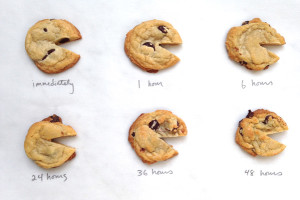For some reason, both my best friend and my little sister are obsessed with narwhals. Given, they are both a little strange (in my opinion), but there still must be a reason that this sea creature can evoke such a response from them. So I decided to look at this animal so that maybe I could understand why they love them so much.
The narwhal is an animal found in northern waters near Greenland, Russia, and the Arctic circle, according to us.whales.org. The scientific name is Monodon monceros, and it is part of the monodontidae family. The other species in that family is the beluga, according to Animal Diversity Web.
It describes the appearance of the narwhal as having “a bulbous forehead, no prominent beak, an arched mouthline, a dorsal ridge rather than a fin, and short blunt flippers with upcurled edge.” They also have two teeth that grow out of their jaws. For me personally, this description does not sound all that appealing. However, for males, one of those teeth grows into a tusk that has a spiral that twists counterclockwise, according to us.whales.org. Animal Diversity Web says that it is usually the left, and the right is just rudimentary. Basically, the narwhal is like an underwater unicorn. I can see how that would be cool.
This “cool” feature, however, is what led the narwhals to have a status of “Near threatened,” as Voices in the Sea labeled them. us.whales.org wrote that European traders used to hunt the narwhals for their tusks which they would sell as unicorn horns. Since their tusks are made out of ivory, they were also valuable for more than their mythical properties since lots of jewelry was made out of ivory.
Besides being used for jewelry, the tusks are also used for fighting and breaking sea ice, said Voices in the Sea. However, the true use of the tusk is as mysterious as the unicorn people mistook it for. Through observational studies, some people have concluded that the tusks are used for “jousting competitions” over females, according to us.whales.org, but they state that this is still under debate. It also says that there is a theory that status is linked to tusk length. Other scientists, says National Geographic, think that the tusks are used as a sensor since they are full of nerves. Two hypotheses they were able to rule out were that the tusk is used for hunting food and that it helps them to survive better. The reason scientists decided that these weren’t plausible explanations was because, first, narwhals don’t eat food that needs to be speared, and, second, if the tusk gave narwhals an evolutionary advantage, how come females don’t generally have one?
Additional reasons why narwhals are actually pretty awesome are that they are super fat and they travel in huge groups. Narwhals weigh up to 3,500 pounds and can be up to 15.5 feet, according to Voices in the Sea’s statistics. I would assume that part of the reason they are so fat is because they live in a very cold climate, so they need blubber to keep them warm. Us.whales.org adds that during migration times, huge numbers of narwhals will swim at high speeds together, occasionally leaping and diving together at the same time. And apparently, they taste good, or at least the native people of Greenland and Canada think so.
So yes, I would conclude that the narwhal is pretty cool. However, it is also endangered. And whether you believe in global warming and climate change or not, between the shrinking ice masses in the Arctic circle and the hunting of narwhals, there has been enough evidence for the International Union for Conservation of Nature to declare the species as near threatened in 2008 (us.whales.org). If we want to keep the underwater unicorn from joining the mythical unicorn on the list of “Animals that do not exist,” we need to take action to make sure the species survives.





































